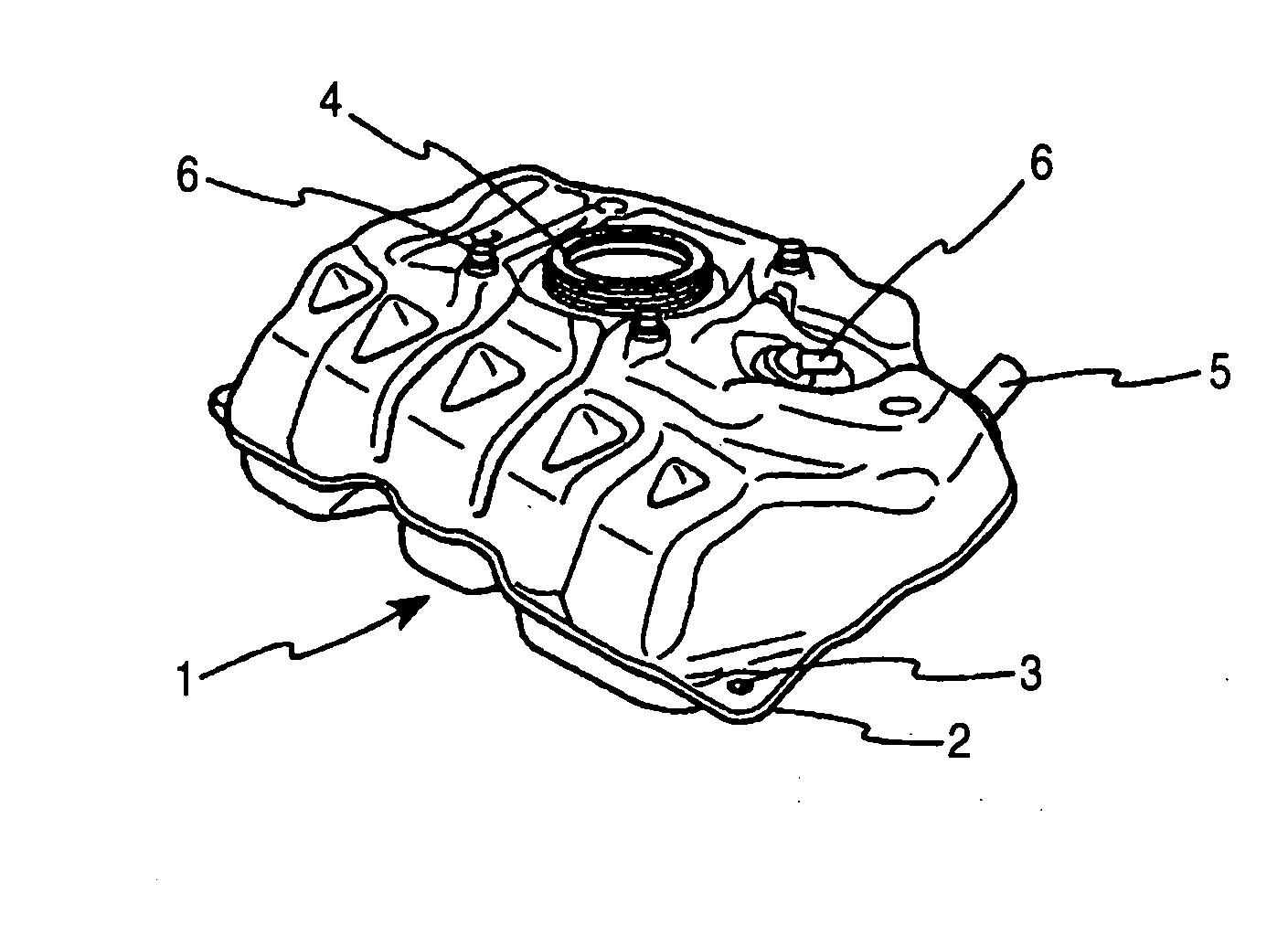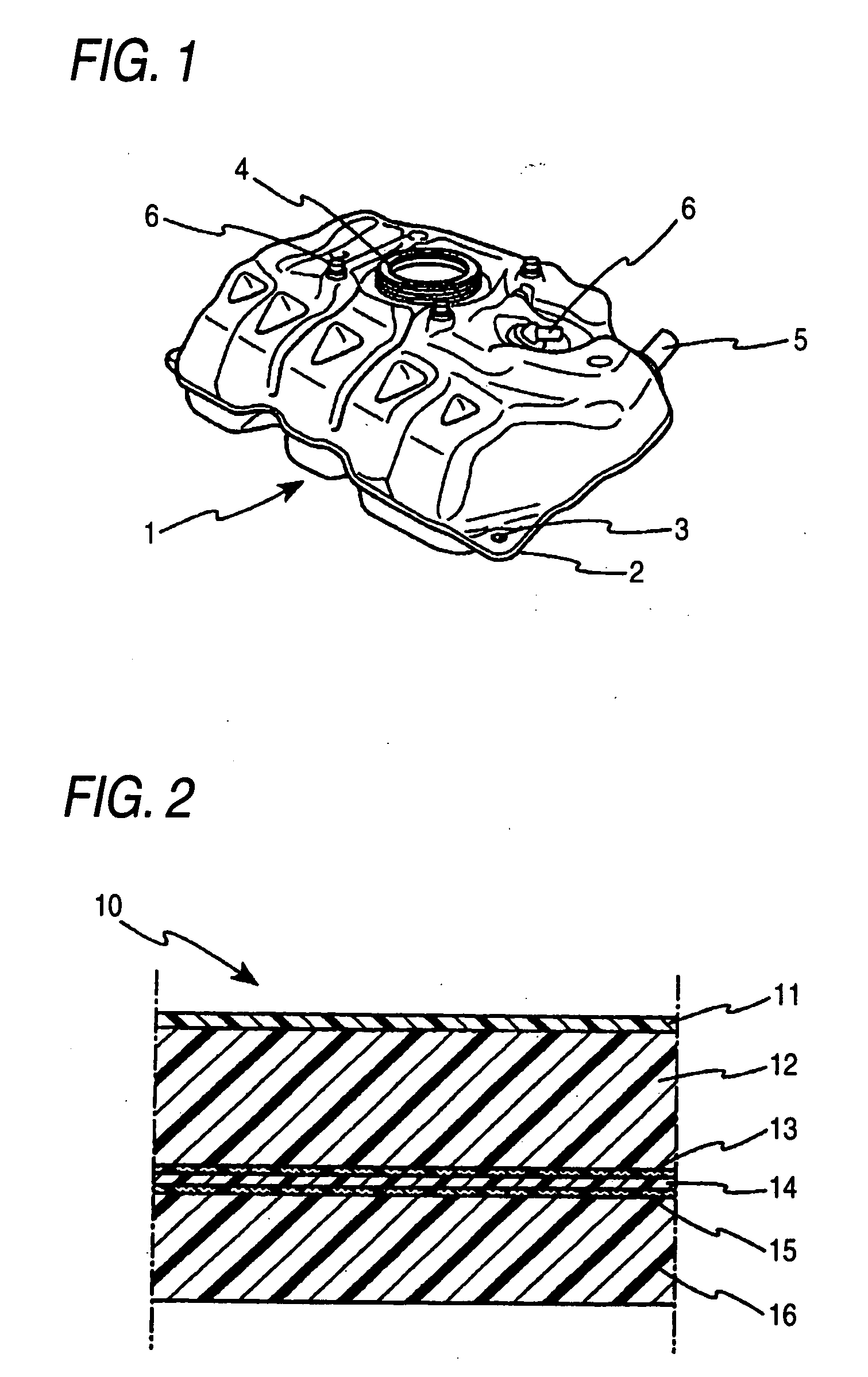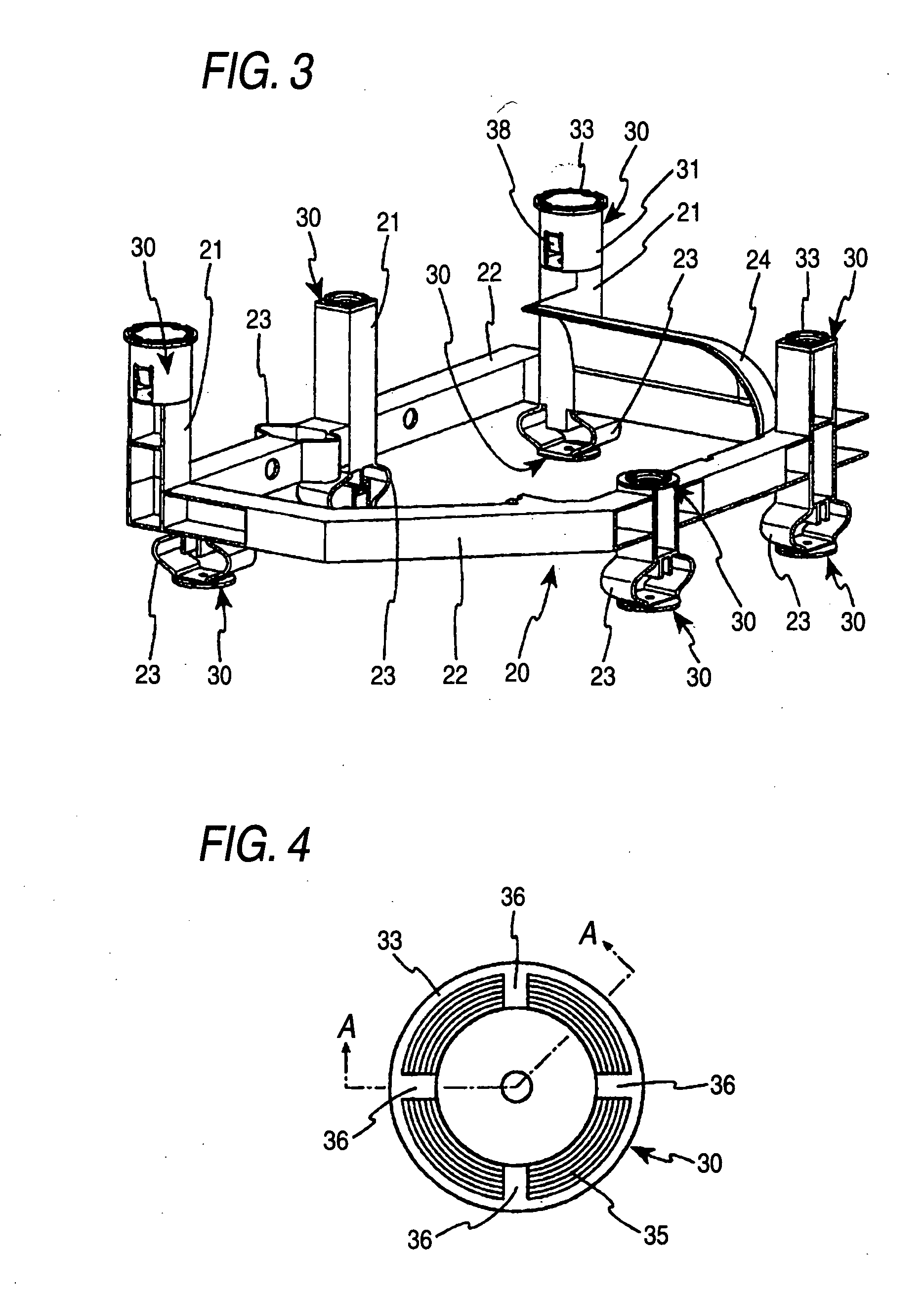Automotive fuel tank
a fuel tank and auto technology, applied in the field of fuel tanks, can solve the problems of increasing the weight of the molded fuel tank, separating the abutment surface b, /b> from the inner surface, etc., and achieve the effect of increasing the distance between the apexes of the adjacent elongated projections
- Summary
- Abstract
- Description
- Claims
- Application Information
AI Technical Summary
Benefits of technology
Problems solved by technology
Method used
Image
Examples
Embodiment Construction
[0060]An automotive fuel tank 1 of an embodiment of the invention will be described based on FIGS. 1 to 14. FIG. 1 is a perspective view of a fuel tank 1 of an embodiment of the invention, and FIG. 2 is a partial sectional view of an outer wall 10 of the fuel tank 1 which is made from a thermoplastic synthetic resin, which shows the configuration of a multi-layer construction of the outer wall 10.
[0061]FIG. 3 is a perspective view showing an example of a built-in part 20 of the fuel tank 1.
[0062]FIGS. 4 to 11 are drawings showing mounting members 30 for attaching the built-in part 20 of the fuel tank 1 to an inner surface of an outer wall of the fuel tank. FIGS. 12 to 14 are drawings showing blow molding steps for fabricating the fuel tank 1.
[0063]As is shown in FIG. 1, the fuel tank 1 which is fabricated in the embodiment of the invention has a pump unit mounting hole 4 formed in an upper surface of the tank for ingress and egress of a fuel pump (not shown) into and from the fuel t...
PUM
| Property | Measurement | Unit |
|---|---|---|
| thickness | aaaaa | aaaaa |
| thickness | aaaaa | aaaaa |
| height | aaaaa | aaaaa |
Abstract
Description
Claims
Application Information
 Login to View More
Login to View More - R&D
- Intellectual Property
- Life Sciences
- Materials
- Tech Scout
- Unparalleled Data Quality
- Higher Quality Content
- 60% Fewer Hallucinations
Browse by: Latest US Patents, China's latest patents, Technical Efficacy Thesaurus, Application Domain, Technology Topic, Popular Technical Reports.
© 2025 PatSnap. All rights reserved.Legal|Privacy policy|Modern Slavery Act Transparency Statement|Sitemap|About US| Contact US: help@patsnap.com



